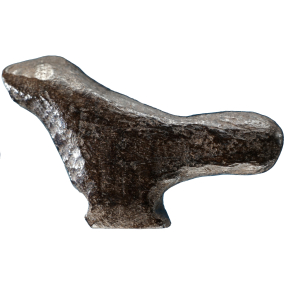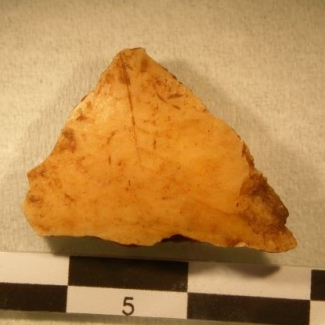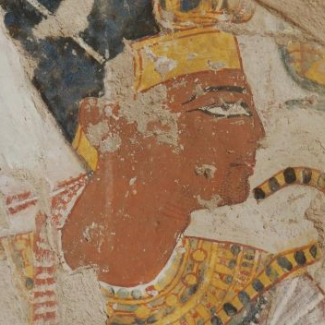
Discovery of the oldest Chinese work of art
Carved from burnt bone, this miniature bird statuette is the oldest known Chinese work of art, according to an international team involving the CNRS, the universities of Bordeaux (France), Shandong (China), Bergen (Norway), and the Weizmann Institute of Science (Israel). It was unearthed at Lingjing, a site in Henan Province, in an archaeological context dated to between 13,800 and 13,000 years ago. This discovery pushes back the origins of animal sculpture and representations in East Asia by more than 8,500 years1 . The stylistic and technical particularities of the figurine – it is the only known Palaeolithic sculpture representing an animal standing on a pedestal – point to an original artistic tradition, different from those known in Western Europe and Siberia. The object’s exceptional state of preservation and the researchers’ use of state-of-the-art analytical techniques, such as confocal microscopy and microtomography, have enabled the team to meticulously reconstruct the Palaeolithic artist's approach. This discovery is published on June 10th 2020 in the journal PLOS ONE.

Its production combined four different techniques (abrasion, gouging, scraping and incision), which left 68 microfacets on the surface of the object.
© Francesco d’Errico and Luc Doyon
To find out more, watch this video: https://youtu.be/dCWwTLnrV2Y
- 1Previously, the oldest known sculptures were the jade and steatite animal figurines from Shangzhai, a 6000 year old site near Beijing.
A Paleolithic bird figuring from the Lingjing site, Henan, China, Zhanyang Li, Luc Doyon, Hui Fang, Ronan Ledevin, Alain Queffelec, Emeline Raguin, Francesco d’Errico. PLOS ONE, 10 juin 2020. DOI : 10.1371/journal.pone.0233370


